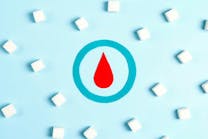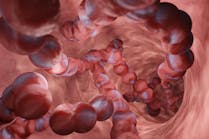Doing more with less
What is remote diagnostics? Simply put, it is technology that enables in vitro diagnostics, or IVD system manufacturers, to remotely monitor instrument performance. If an instrument is operating outside of preset parameters, remote diagnostics can help the manufacturer ascertain or diagnose the problem quickly and sometimes even prevent it altogether.
The need for remote diagnostics has never been greater, especially with the short supply of lab technologists. It is estimated that at least 5,300 new medical technology positions are needed each year and an additional 4,000 positions are lost due to retirement. Annually, of the 9,300 positions needed, only 4,800 students graduate a shortfall of 4,500 positions.1 In addition, the number of medical technology programs is decreasing.
To counteract this disturbing trend, laboratories are constantly searching for ways to utilize smaller staffs. Kiechle and Main have outlined several means of improving efficiency in the clinical laboratory.2 These include cross training staff members, expanding the core business through outreach, more widespread use of lab robotic systems, expanding point-of-care testing, cost shifting to lower-wage employees (thereby increasing the ratio of MLT/MT) and consolidating hospitals and/or workstations.
These activities can help labs build an environment that allows medical technologists to focus on value-added analytical activities. But even as medical technologists become more focused on value-added work, they still bear the responsibility of ensuring the reliability and uptime of instruments. Instrument performance becomes even more critical as personnel numbers shrink. Technologists must monitor instrument performance, perform regular maintenance, run quality control and troubleshoot in addition to their other duties. These time-consuming activities pinpoint yet another opportunity to increase efficiency: remote diagnostics.
Benefits of remote diagnostics
To understand the full potential of remote diagnostics, it helps to examine a hypothetical scenario that occurs in virtually every laboratory without this technology. If an instrument behaves erratically, the technologist assigned to the instrument usually initiates troubleshooting. After several attempts to rectify the problem, the technologist may consult the key operator, who also attempts to remedy the situation. If that fails, the lab calls the manufacturers service line for additional troubleshooting suggestions. Based on the outcome of that call, field service personnel may be dispatched to repair the instrument onsite.
Throughout, technologists must either shift testing to another instrument or start, calibrate and control the backup instrument. Eventually, the field service rep appears, but not necessarily with the replacement parts in tow. He may diagnose the instrument problem first, then order the necessary parts. If these are shipped overnight, he may be able to perform the repair the next day. If the replacement parts do not remedy the problem, the cycle starts again. This can happen at any time night, day, even weekends. At minimum, downtime for each incident spans at least a day. For laboratorians, physicians and patients, this is a lose-lose situation.
One glaring problem with this scenario is the lack of a detection mechanism. By the time the technologist notices the problem, the root cause may be obscured, leading to several iterations between the lab and the manufacturers service center before the situation is corrected. Instrument failures are often preceded by clues, medical technologists often have no way of detecting these clues other than daily monitoring and performance checks. This is where remote diagnostics proves its worth.
Available for several years now, remote diagnostics can be deployed in a number of ways. Many IVD manufacturers employ it reactively due to the limitations of their technology; the diagnostics service is turned on when a technologist calls the manufacturers service engineers to notify them that the instrument has malfunctioned. To be truly effective, remote diagnostics must take a proactive approach. The technology can be used to automatically detect issues and even solve problems before components have reached the point of failure.
The lab at Baptist Medical Center in Jacksonville, FL, is among the first to employ a proactive remote diagnostics system. Connected to its SYNCHRON LX20 chemistry analyzers, the PROService system uses a computer to automatically monitor instrument vital signs, such as pumps, temperature, valves, calibration data and metering. The computer tracks and categorizes these vital signs, then alerts service representatives to potential problems before the instrument malfunctions, much like having a cyber engineer on site 24 hours a day, 7 days a week.
Now the scenario outlined earlier unfolds in a dramatically different way. As the medical technologist is working at the instrument, a small probe (computer) silently collects information and sends the data every eight seconds via the Internet to an enterprise portal server. The data are analyzed automatically for abnormal trends, spikes or error messages. If the data indicate a condition that may need attention, an alert is sent automatically to a service representative, providing him with the information about which component is misbehaving. The service representative can then order the necessary part and notify the appropriate field service technician, who then delivers the part and replaces the ailing component on the laboratorys instrument. Meanwhile, the instrument has continued to operate and produce analytically valid results. The lab has not experienced any instrument downtime.
The benefits of this service are compelling. By troubleshooting and solving problems before they occur, proactive remote diagnostics increases instrument uptime, which boosts laboratory productivity. Valuable laboratory staff time is saved and costs are kept to a minimum, since human troubleshooting, telephone time, trial and error fixes, and downtime have been avoided.
The future of remote diagnostics
The potential for remote diagnostics extends beyond silent monitoring of internal instrument components. The technology can assist with everything from quality control to inventory management. Potential applications of remote diagnostics include:
- Preventive maintenance (PM) reminders could be sent to technologists via e-mail, especially if testing volumes have changed and the PM schedule needs to be altered.
- The service can notify the laboratory when an instrument part should be changed as part of routine maintenance, or if there is a problem with the instrument that can be easily corrected.
- Manufacturers can help labs ensure that the tests and instruments are performing at optimum levels. Quality control data can be transmitted automatically to the manufacturer for analysis. This means the customer receives quality control assurance quickly and conveniently.
- Manufacturers can access metering data and automatically replenish a labs reagents and controls without the involvement of laboratory staff. For manufacturers and labs, this can reduce many time-consuming labor steps.
- Manufacturers may even offer software updates through the connection when a new test is added. With remote diagnostics technology, software can be downloaded automatically to the instrument.
Privacy and trust
All of this data sharing can raise questions about privacy and security. Laboratories should make sure the remote diagnostics services they select provides multiple layers of privacy protection. The technology in place at Baptist Medical Center can only access instrument performance information, preventing even service representatives from accessing patient information, and to view instrument data, they must log on to a password-protected system that encrypts the data it transmits.
Even with these protective measures, implementing remote diagnostics tailored for the needs of the lab requires a high degree of trust between hospitals and IVD manufacturers. The two must agree on procedures for monitoring performance, sharing data and establishing appropriate Internet security measures.
It is this same level of trust that provides peace of mind to busy laboratorians. At its best, remote diagnostics functions like a home security system: The homeowners set the system, secure in the knowledge that it is regularly monitoring all the windows and doors. This technology helps ease the labor shortage that impacts so many labs and it lowers overall costs while safeguarding instrument uptime. Remote diagnostics provides another tool to improve efficiency and help valuable medical technologists do what they do best produce high-quality, medically relevant information.
James D. Peele, PhD, is director of Clinical Chemistry at Baptist Medical Center in Jacksonville, FL. Allan Trochman is senior staff software development engineer for Beckman Coulter in Brea, CA.
References
- Steen C, Breiwick L. Clinical Laboratory Careers. Available at:
www.wsscls.org/recruitment.pdf. Accessed August 13, 2003. - Kiechle F, Main R. The Hitchhikers Guide to Improving Efficiency in the Clinical Laboratory. AACC Press, Washington, DC. 2002.
October 2003: Vol. 35, No.
10
© 2003 Nelson Publishing, Inc. All rights reserved.





